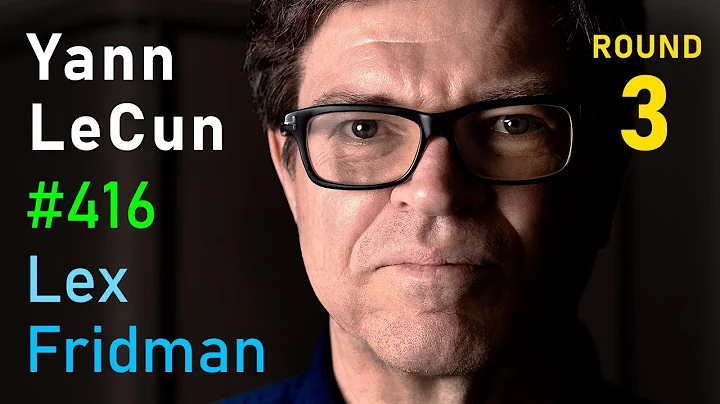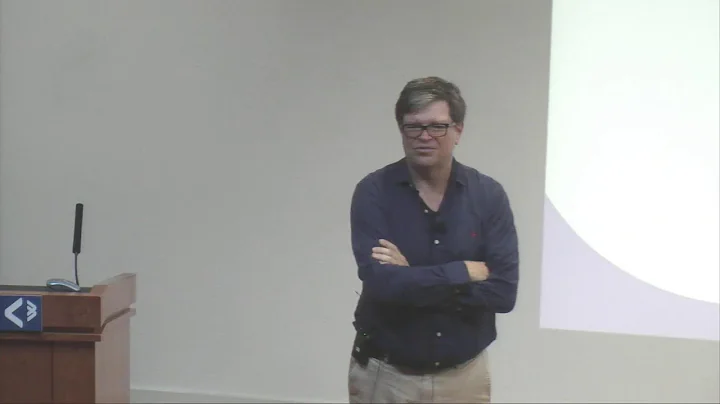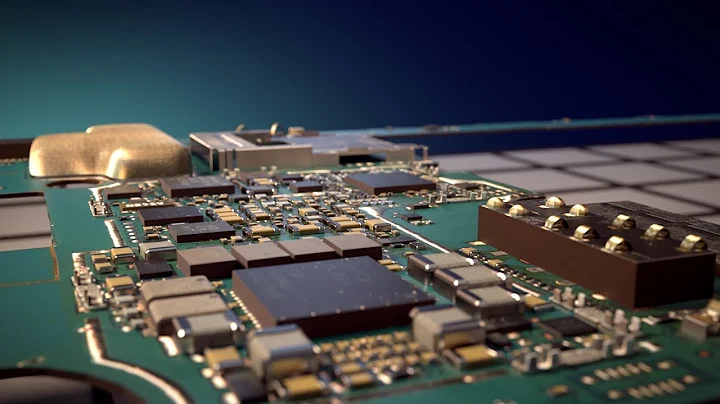
About a year and a half ago, Yann Le Cun realized that his idea was wrong.
He is the chief scientist of Meta's artificial intelligence laboratory and one of the most influential artificial intelligence researchers in the world. He has been trying to give machines common sense about how the world works by training the neural network to predict what will happen next in video clips of everyday events. However, predicting future frames on a pixel-by-pixel basis is too complex. He hit a wall.
Now, after months of hard work, he has found what was missing and has a bold new vision for the next generation of artificial intelligence. In a draft document shared with MIT Technology Review, LeCun outlines an approach that he believes will one day provide machines with the common sense they need to navigate the world. To LeCun, these proposals could be the first step toward building machines with human-like reasoning and planning abilities—what many call artificial general intelligence, or artificial general intelligence (AGI).
He also stayed away from the hottest trends in today's machine learning field and revitalized some outdated old ideas. But his vision is far from comprehensive; in fact, it may raise more questions than it answers. As LeCun himself points out, the biggest problem is that he doesn't know how to frame what he's describing. At the heart of the new method is a neural network that can learn to see the world at different levels of detail. This network abandons the pursuit of pixel-perfect predictions and will focus only on those features of the scene that are relevant to the current task.
recommends pairing this core network with another core network called a configurator, which determines what level of detail is required and tunes the entire system accordingly.
, AGI will become part of our interaction with future technologies. His employer, Meta Corporation, is heavily promoting the development of the virtual reality metaverse, and his vision is also influenced by it. He said that in 10 or 15 years, people will no longer have smartphones in their pockets, but augmented reality glasses with built-in virtual assistants, (virtual assistants) that will guide people in their daily lives. "In order for these things to be most useful to us, they basically have to have more or less human-level intelligence," he said.
Joshua H., an artificial intelligence researcher at the University of Montreal and scientific director of the Mira-Quebec Institute "Yann has been talking about these ideas for a while," said Yoshua Bengio. "But it's good to be able to integrate these in a big scene." Bengio believes that LeCun has proposed the right research direction.
He also thought it was very good that LeCun was willing to come up with such a document with imperfect answers. It's a research project, not a complete set of results, he said.
"People talk about these things privately but often don't share them publicly." Bengio said, "There are risks."
A common sense question

I have been thinking about artificial intelligence for nearly 40 years. In 2018, he, together with Bengio and Geoffrey Hinton, won the Turing Award, the highest computer award, in recognition of his pioneering work in deep learning. He said: "Making machines behave like humans and animals has always been my lifelong pursuit."
believes that animal brains run a way of simulating the world, which he calls an environment model. This is how animals (including humans) learn as babies to make correct guesses about their surroundings.
During the first few months of life, babies gain basic knowledge by observing the world. Seeing a dropped ball fall a few times is enough to teach your child how gravity works.
"Common sense" is a general term for this kind of intuitive reasoning. It involves mastery of simple physics: for example, knowing that the world is three-dimensional and that objects don't really disappear when they leave the field of view.
It allows us to predict where a bouncing ball or a speeding bicycle will be a few seconds from now. It helps us connect pieces of information together: if we hear a metallic clang in the kitchen, we can deduce that someone dropped a pot - because we know what makes that sound and when they make it This sound.
Simply put, common sense tells us which events are possible and which are impossible, and which events are more likely to occur than others. It allows us to foresee the consequences of our actions and make plans—while ignoring irrelevant details.
However, teaching common sense to a machine is difficult. Current neural networks still need to be shown thousands of examples to achieve such a pattern.
In many ways, common sense is equivalent to the ability to predict what will happen next. “This is the essence of intelligence,” LeCun said. That's why he and some other researchers have been using video clips to train their models.
But existing machine learning technology requires the model to accurately predict what will happen in the next frame and generate the picture pixel by pixel. Imagine you pick up a pen and then let it go, LeCun said.
Common sense tells you that the pen will fall, but you won't know the exact location where it ends up. Predicting this requires calculating some advanced physics equations.
That’s why LeCun is now trying to train a neural network that predicts when the pen will fall, but not exactly how. He believes that this trained network is equivalent to a model of the environment that the animal relies on.
The mysterious ingredient

LeCun said he has built an early version of this environment model that can do basic object recognition. He is now working hard to train it to make predictions. But how the configurator is supposed to work remains a mystery, he said. Think of this neural network as the controller of the entire system. It will decide what predictions the environment model should make at any given time, and what details it should focus on to make those predictions possible, adjusting the environment model as needed.
LeCun was convinced that something like a configurator was needed, but he didn't know how to train a neural network to do the job. "We need to come up with a good recipe to do it, but we don't have that recipe yet," he said.
In LeCun's vision, the environment model and the configurator are two key parts of the larger system, which he calls It is a cognitive architecture, such as a model that can actively perceive the world, and a model that uses a reward mechanism to continuously explore and improve AI behavior.
LeCun said each neural network is roughly similar to some part of the brain. For example, configurators and environment models are designed to replicate the functions of the prefrontal cortex. The motivational model corresponds to certain functions of the amygdala, , and so on.
The concept of cognitive architectures, especially those inspired by the brain, has been around for decades. The same goes for many of LeCun's ideas about using models with varying levels of detail for prediction.
However, when deep learning became the dominant method of artificial intelligence, many of these old ideas became obsolete. "People working in artificial intelligence have kind of forgotten this," he said.
What he has done is take and revive these old ideas and come up with methods that can combine them with deep learning. For LeCun, revisiting these outdated ideas is crucial because he believes both of the mainstream approaches to modern AI are dead ends.
When it comes to building general artificial intelligence, there are two main camps. In one camp, many researchers believe that the remarkable success of large language or image-making models like OpenAI's GPT-3 and DALL-E shows that all we need to do is build bigger and more models.
Another camp is a fan of reinforcement learning, an artificial intelligence technique that rewards specific behaviors so that neural networks learn through trial and error. This is the method used by DeepMind to train game-playing AIs like AlphaZero.
This argument believes that under the correct reward mechanism, reinforcement learning will eventually achieve more general intelligence.
He disagrees with this: "I don't believe it at all, not for one second, that as long as we expand the current large language models, human-level artificial intelligence will eventually appear." He said that these large models are just Manipulate text and images.
They have no direct experience of the world. He is also skeptical of reinforcement learning, which requires large amounts of data to train models to complete even simple tasks. “I don’t think it’s going to work at all,” LeCun said.
DeepMind’s David Silver, who leads the AlphaZero effort and is a big fan of reinforcement learning, disagrees with this assessment but agrees with LeCun’s overall vision. He said: "Studying the representation and learning patterns of an environment model is an exciting new direction." Melanie Mitchell, an artificial intelligence researcher at the Santa Fe Institute, is also excited to see It’s a completely new approach. “We’ve really never seen so many ideas like this emerge from the deep learning community,” she said. She also agrees with LeCun that large language models don't tell the whole story. "They lack memory and internal models of the world, which are actually really important," she said. "
" However, Natasha Jaques, a researcher at Google Brain, believes that language models should still play a role. The complete lack of language in LeCun's proposal is strange, she said: "We know that large language models are very effective and absorb a lot of human knowledge."
Jaques, who works on how to let artificial intelligences share information and capabilities with each other, she Point out that humans do not necessarily have direct experience to understand something. We can change our behavior simply by being told something, like not touching a hot pan. "How do I update Yann's environmental model without language?" she asked. There is another problem with
. If they succeed, LeCun's ideas could create a powerful technology as transformative as the Internet. However, his proposal does not discuss how to control his model's behavior and motivations, or who would control them.
Abhishek Gupta, founder of the Montreal Institute for Ethics in Artificial Intelligence and an artificial intelligence expert and director of Boston Consulting Group , said this was an unexpected oversight.
Gupta said: "We should think more about how artificial intelligence can play a good role in society, and that needs to consider ethical behavior and so on."
However, Jaques pointed out that LeCun was more interested in ideas than practical applications. Mitchell also said: "This kind of intelligence is unlikely to reach human-level intelligence anytime soon."
would agree. His intention is to sow the seeds of new methods and hope that others can build on it. Development. “It takes a lot of effort from a lot of people. "I came up with the idea because I thought that was ultimately the way to go," he said. "At the very least, he wants people to believe that large language models and reinforcement learning are not the only way forward.“I hate to see people wasting their time,” he says.
-End-
Original text:
https://www.technologyreview.com/2022/06/24/1054817/yann-lecun-bold-new-vision-future-ai-deep-learning-meta/























